Pet owners’ hectic lifestyles call for convenient options
The tendency to treat pets as a family member continues to boost the pet food market as pet owners apply many of the same standards to the food they give their pets as they do to those they choose for themselves and other family members. Concepts such as clean label, fresh, natural ingredients and targeted nutrition are driving growth in human and pet food markets.
In another parallel with the human food market, pet food purchasers are increasingly unwilling to sacrifice quality for convenience and vice versa.
Following the Human Grade trend in the pet food industry, there is an opportunity to give even more emphasis to the convenience aspect of pet foods. In 2018, 18% of new pet food launches featured a ‘convenience’ claim according to Mintel GNPD. For human food, this number stands at 21%.
Flexible stand-up pouch, the convenience superstar
Flexible stand-up pouches have gained ground in pet food NPD globally, with 36% of launches packaged in this format in the 12 months to June 2019, compared to 30% five years ago.
Lighter, flexible stand-up pouches mean lower transport costs and have been adopted particularly in the wet dog food and cat soup categories.
The mess-free opening of flexible pouches is a further selling point for pet owners. Several convenience claims associated with the packaging appear on-pack, such as “easy-to-open” or “no-mess”.
Single-serve reassures on freshness
A number of products claim to ‘stay-fresh’. The freshness aspect is particularly important as pet owners are looking for fresher and healthier foods for their pets.
Numerous claims including ‘freshness seal’, ‘maximum freshness’ or ‘stay-fresh’ are visible. Mars PetCare features such claims in several brands. For instance, Perfect Fit brand uses a ‘freshness zip’ while Royal Canin claims the pack is sealed to protect freshness and nutritional quality for longer.
Furthermore, one quarter of French pet owners* believe that pet food in single-serve packs is fresher than standard packs. This type of packaging can be particularly relevant for demanding cats that eat several times per day and can’t bear food oxidation.
As pet owners look to purchase a wider range of flavors to satisfy their pets’ appetite, single-servings and variety packs of pet food are set to increase. As single serve pet foods follow human food trends and become more premium, we expect to see a ‘delicious’ selection of gourmet pet foods lining supermarket shelves.
Smaller pack sizes answer a need for quick and nutritious options on-the-go
As pets are increasingly welcome in public spaces, owners may start to seek pet food and treats that can be eaten on-the-go. There is a growing demand for snacks that can be given to distract or de-stress pets when out and about.
The innovation market has actually seen more 100g, 85g and 70g formats over the last three years. Smaller portion sizes and functional ingredients (eg stress-reducing botanicals) will suit animals that are less active or live more stressful urban lives.
To meet these needs, Belgian brand Edgar Cooper launched pocket-sized treats sachets and in South Korea, Rayfarm unveiled a lunch box for dogs. The latter, on-the-go product is said to be made with a balanced nutrition formula and packed hygienically to keep ingredients fresh, ideal for when going out with a pet. It retails in a 336g pack containing six 56g units.
Vely Soup claims to be the first freeze-dried powdered pet soup in South Korea and can be mixed with cold water for an on-the-go snack for dogs. The recipe is quick-frozen to retain flavour and nutrients and is free from artificial additives and preservatives.
Pet food purchasers are increasingly unwilling to compromise on convenience or quality. Innovative formats mimicking human expectations can enhance perceived value and usage.
Woofshake is a powdered milkshake formula from China which requires water to prepare and can be used as a food topper for breakfast or as an evening snack. It claims to improve digestive system, support immunity, promote metabolism, maintain cardiovascular health, and aid in urinary tract and bladder health.
Slurps nutritious drinks for dogs has been developed in a pouch format to offer an ultra-convenient and nutritious way to get dogs drinking more with an extra dose of Omega 3 fish oils.
Snack bars have also made their way into pet food. The OUT Bar, for example, is specifically designed to feed dogs with real food on-the-go. This is meant to answer the need for more portable pet food when outdoor.
Since the OUT Bar is “scored” (ie. can be broken into 4 smaller pieces), it can be used in a wide range of scenarios. It leads to the portionability aspect of pet food packaging.
Portionability helps pet owners to feed their pet with the right quantity and when they are on the move. Given the increasing obesity in pets, portion control is really important.
The pet food industry will not escape the plastic backlash
Concerns around plastic packaging waste span numerous industries. Half of UK pet food buyers* are concerned about the environmental impact of pet food packaging.
The current spotlight on reducing the amount of plastic packaging used by the food industry is likely to impact the pet food market as well. In Europe, environmentally friendly packaging claims have risen from 7% to 9% among cat and dog food launches over the last five years, according to Mintel GNPD.
With flexible stand-up plastic pouches being among the most popular packaging formats in the pet food market, the current spotlight on plastic packaging has drawn attention to their poor recyclability.
A growing number of pet food companies are attempting to tackle the issue by using alternative, more environmentally-friendly packagings, while forging partnerships with retailers and recycling firms to help with recycling schemes.
Mars Petcare announced its partnership with the recycling firm Terra Cycle in the UK for a pet food packaging recycling programme in November 2018 and Nestle Purina created a research institute for packaging to boost its sustainability agenda.
In the UK, Lily’s Kitchen has called for pet food manufacturers to stop using plastic pouches and to look at using more recyclable packagings. The brand is now using biodegradable and compostable pouches.
The American brand Annamaet uses biodegradable bags, and Naturediet Pet Foods transitioned to Tetra Pak cartons in early 2019, promoting a reduced carbon footprint.
US packaging company ProAmpac has created several new sustainable packaging ranges as part of its commitment to create increasingly sustainable flexible packaging solutions.
Proactive steps in this area are warranted. Hard-to-recycle packaging risks facing media scrutiny and consumer backlash, as seen in other markets, as plastic pollution is high on consumers’ radars as an environmental issue.
* Source: Mintel
Take-home points
- Pet owners’ increasingly hectic lifestyles and their growing tendency to treat their pets as family members – including taking them out and about more – means growing demand for conveniently packaged, on-the-go pet foods, snacks and treats.
- Flexible stand-up pouches are widely used for pet food launches as they are easy to open and often come in single-serve sizes. However their disposal after use could become an issue for consumers if recyclability isn’t improved.
- There’s an opportunity for single-serve formats to appeal to pet owners looking for a maximum freshness and portion control for their furry friends as they would for themselves.
- The plastic backlash impacts the pet food industry and collaboration between pet food brands and other packaging and environmental organisations is expected to spread.
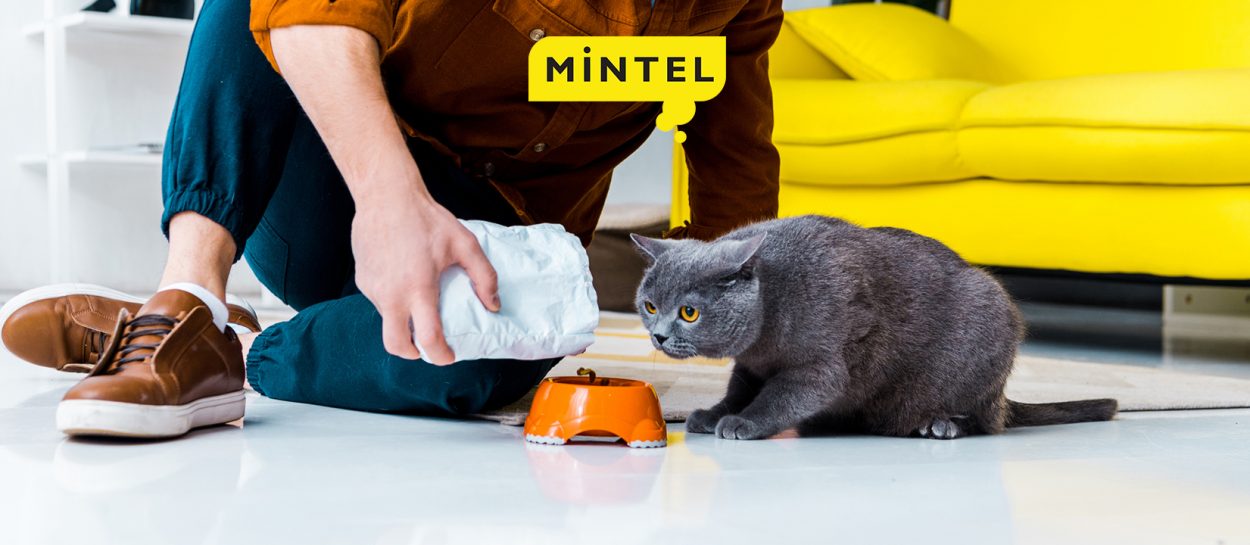
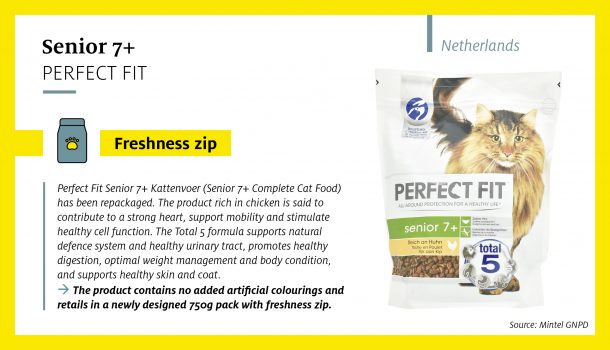
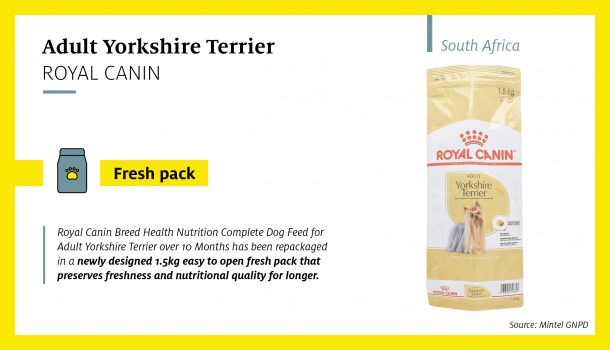
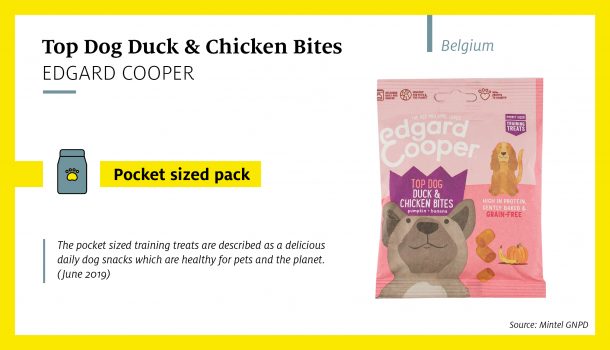
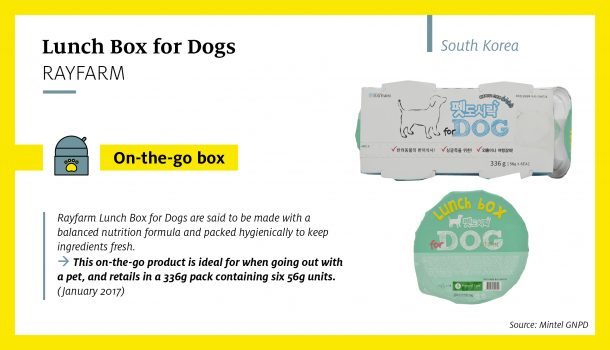
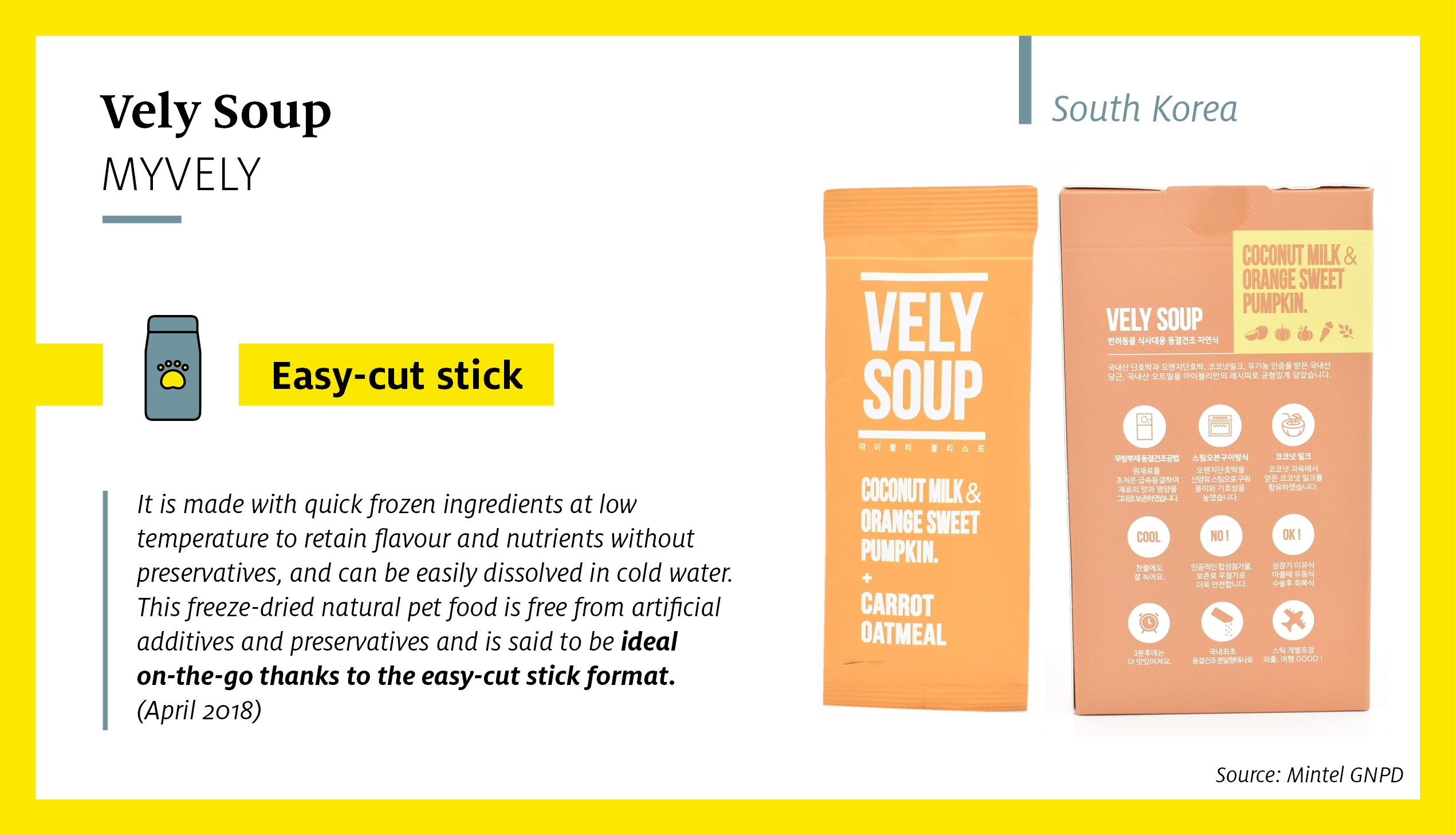
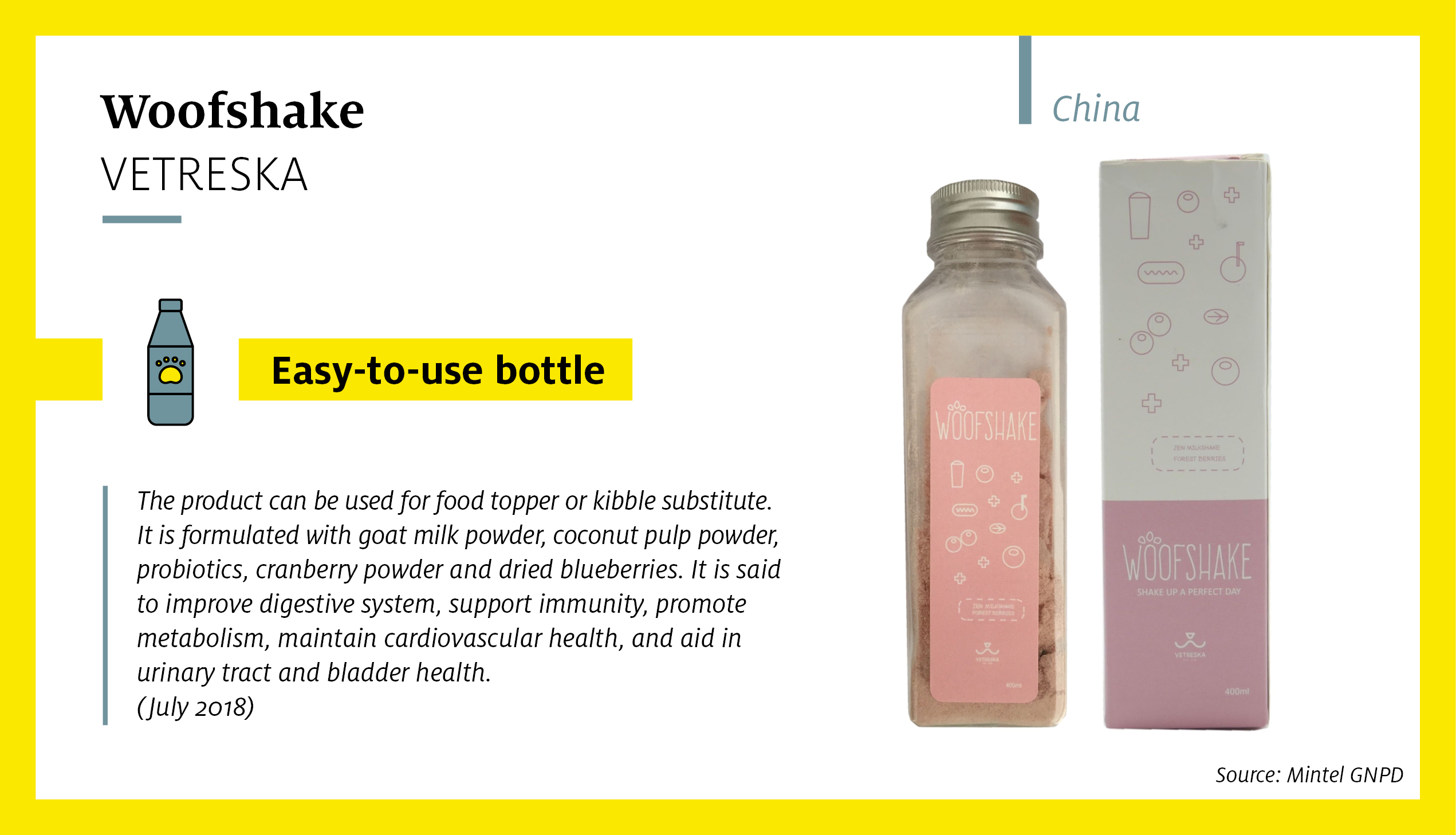
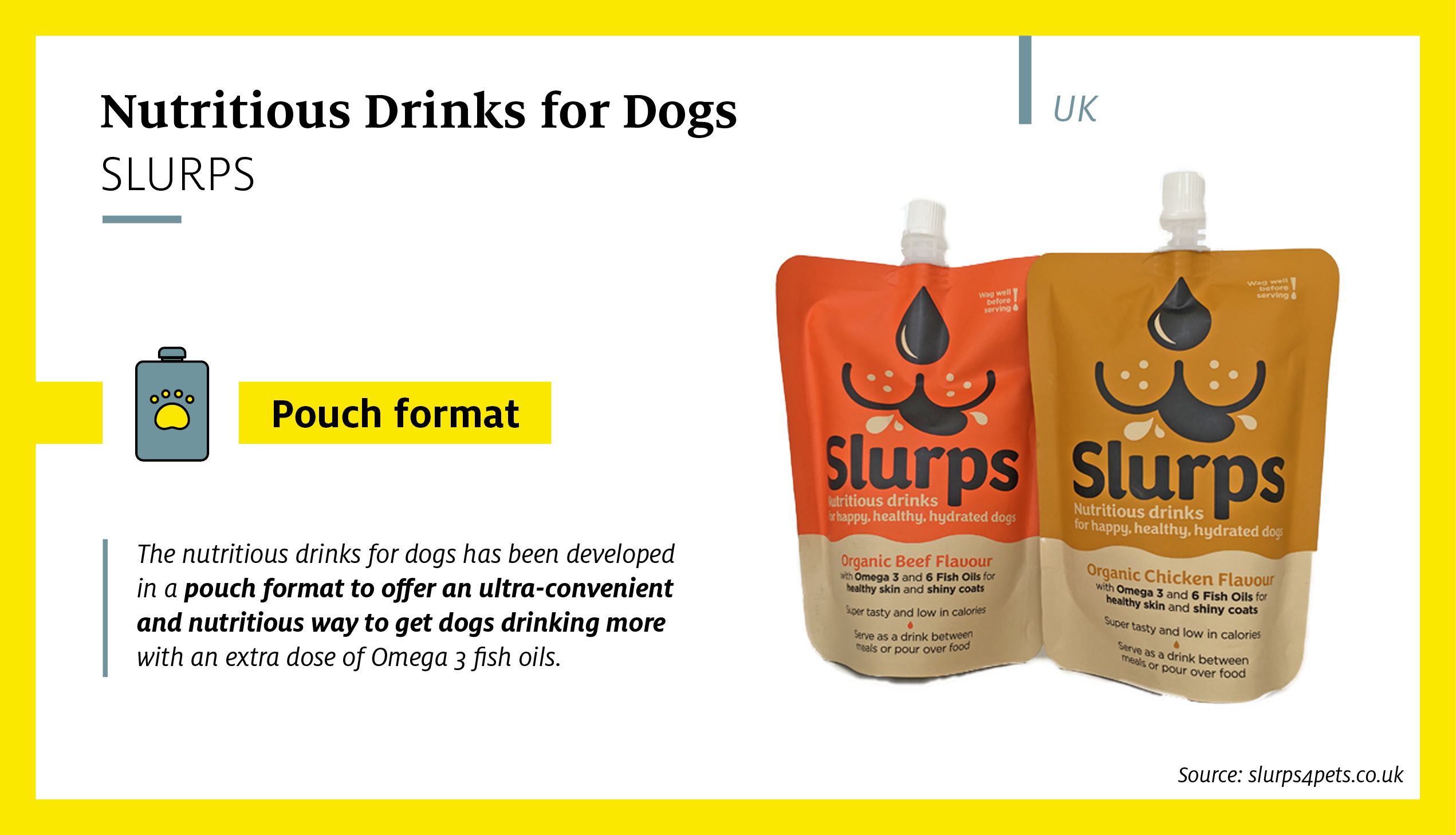
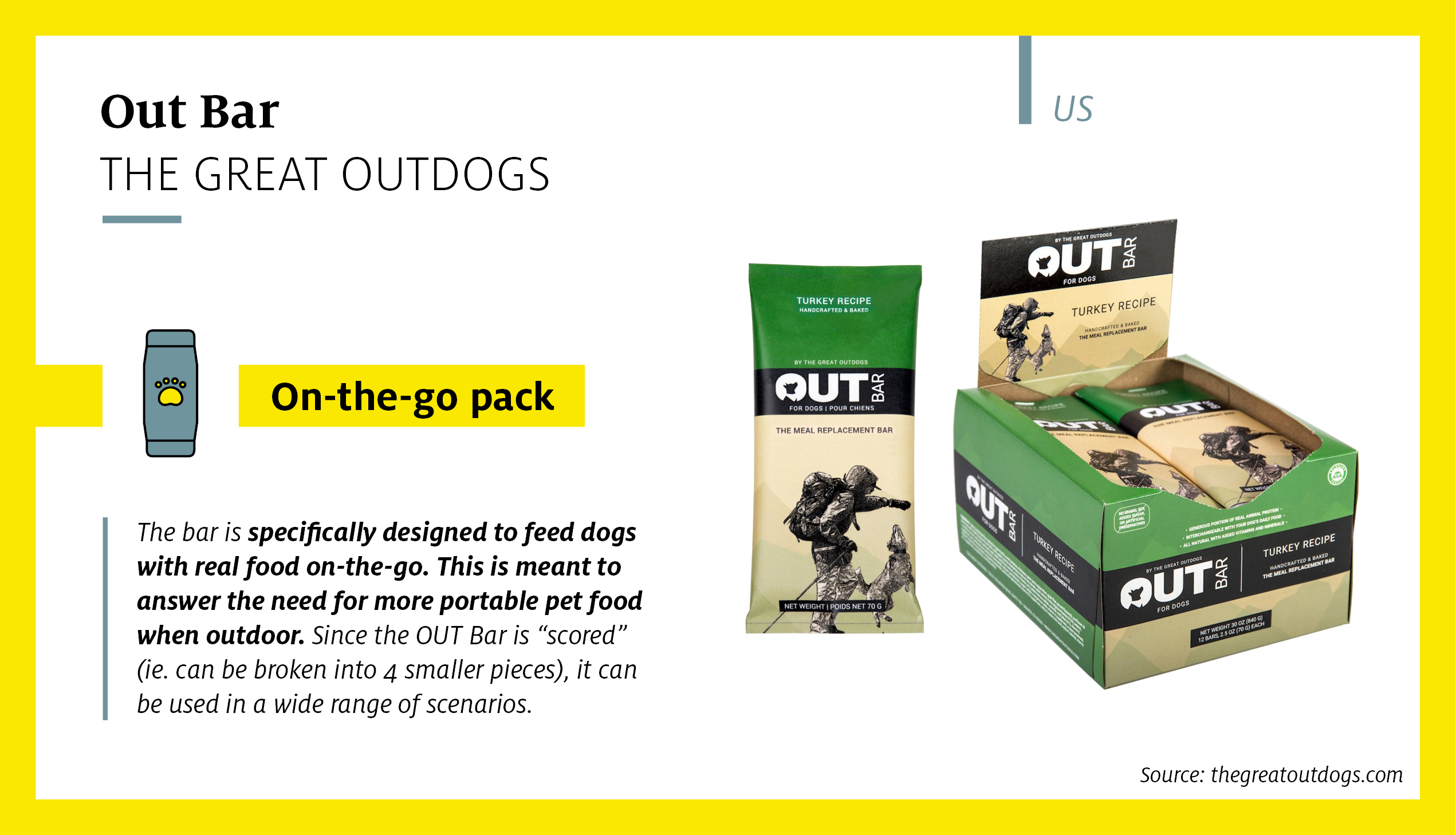
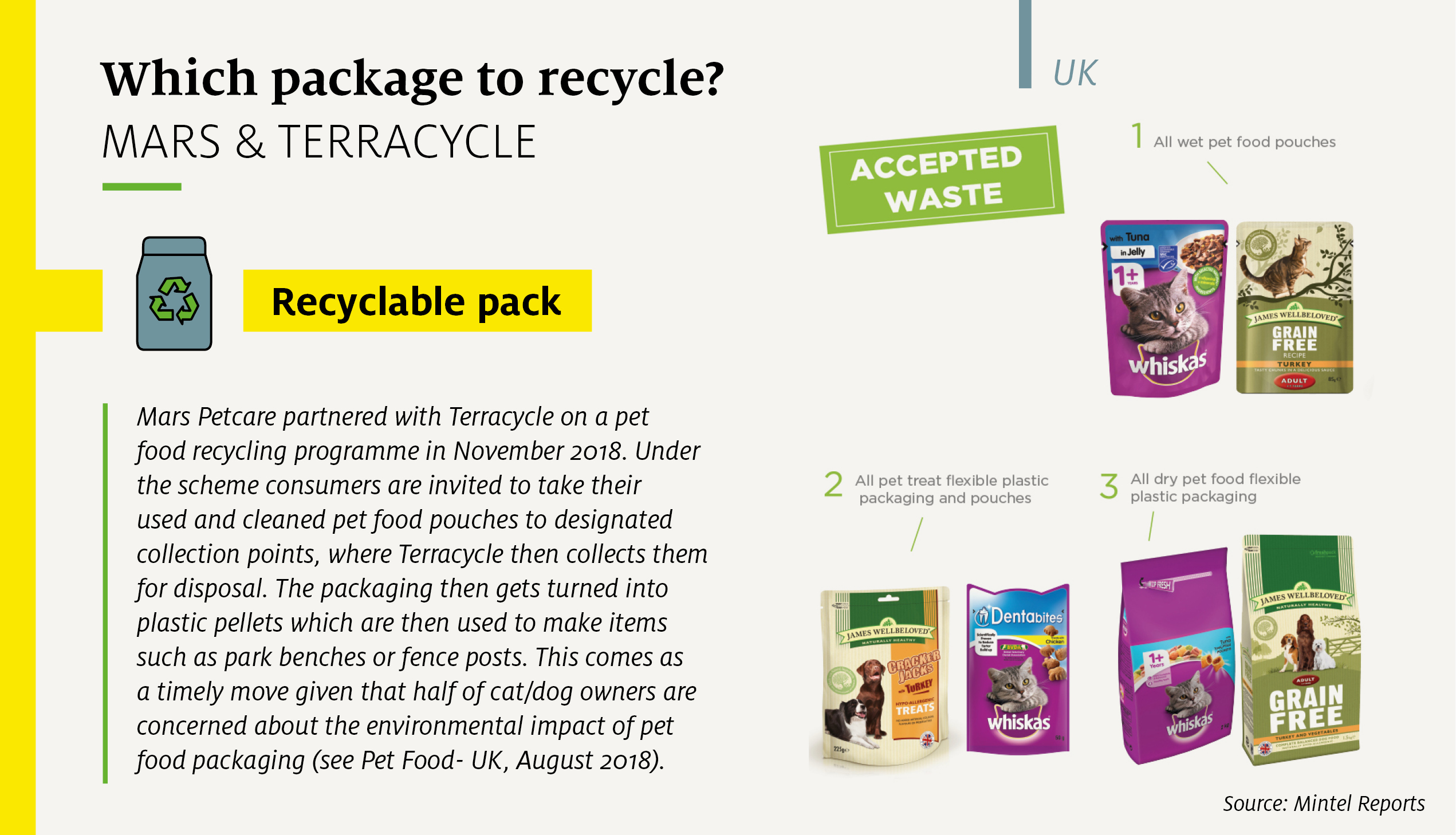

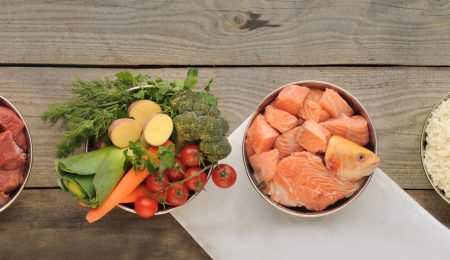
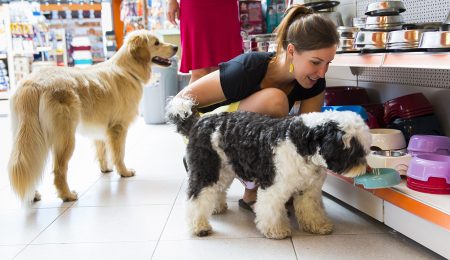
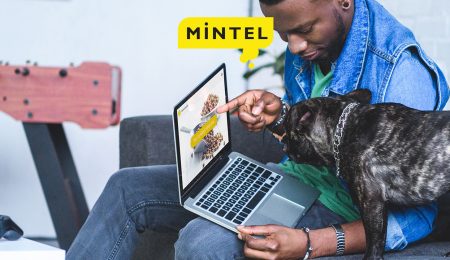
* required fields